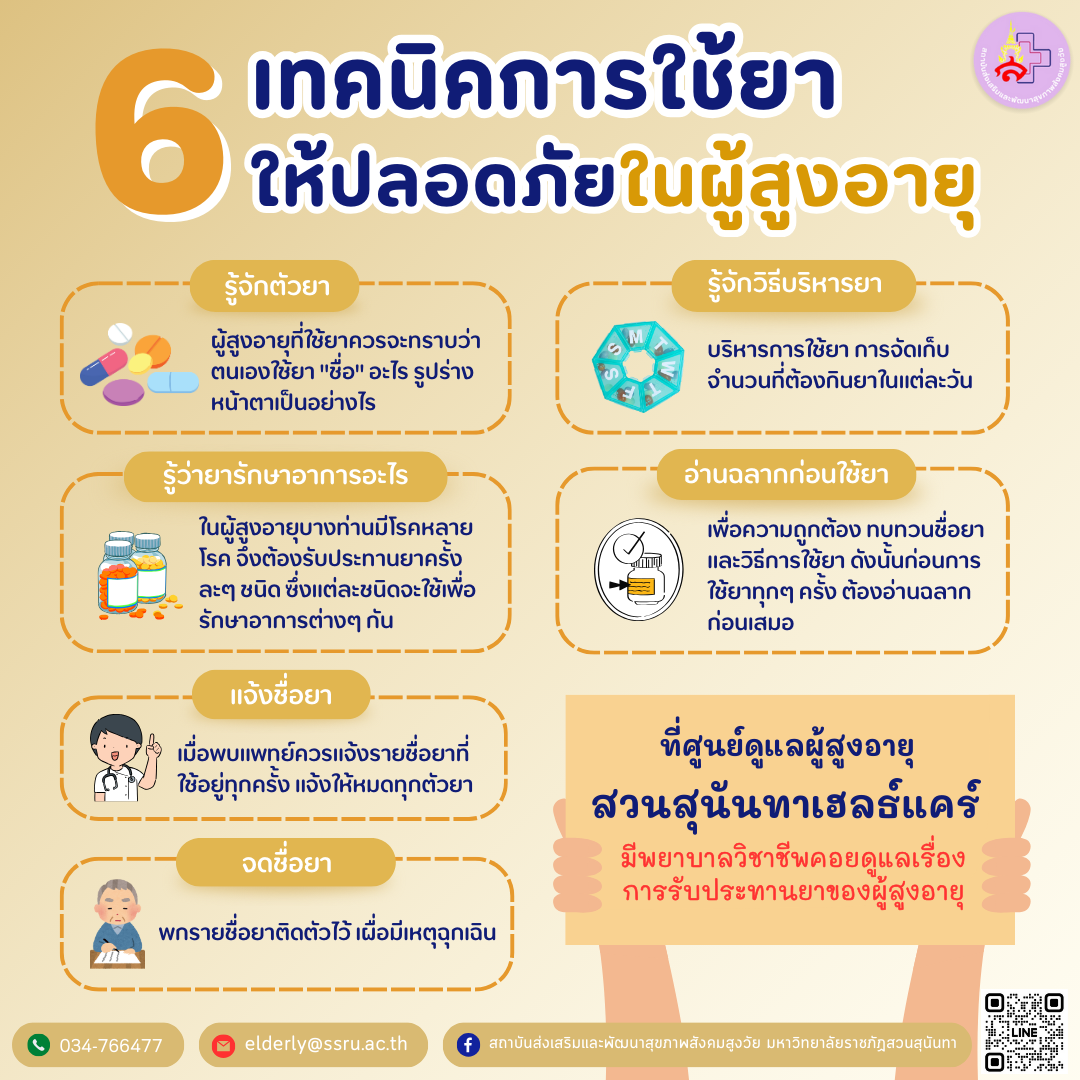
6
techniques for safe drug use in the
elderly
1. Know the
medicine
Elderly people who use
medicine should know the
"name" of the medicine they
are using, how much the medicine is,
what its appearance is, including color,
smell, and taste. If something unusual
occurs, they will know and be careful in
using it.
2. Know how to use
medicine
Methods of drug
administration (oral, injection,
topical, or how to use) including drug
storage Know the possible side
effects.
3. Know what symptoms the
medicine treats and what effects it
has.
In some elderly people, there
are many diseases. Therefore, many types
of medicine must be taken at a time.
Each type of medicine is used to treat
different symptoms. Some medicines are
used hoping for one effect but cause
another side effect, such as appetite
suppressants. Many people who use them
experience symptoms of dryness and dry
throat, even more so when used
frequently for a long time, it is not
good for health.
4. Read the
label and check the condition before
using the medicine.
for accuracy
Review drug names and how to use them.
Therefore, before using medicine every
time you must always read the medicine
label. Observe the appearance of the
envelope, drug label, and packaging.
They should be in good condition, not
cracked, torn, damaged, or
decomposed.
5. Always inform
the doctor.
When elderly people need
to see a doctor or pharmacist, they
should always be informed of the regular
medicines they are taking. Tell them all
of the medicines, including any vitamins
or tonics they are taking. To prevent
the problem of redundant drug dispensing
and check for drug interactions that may
occur if taken together Especially those
who take drugs that are at risk of
interacting with each other, such as
cardiovascular disease drugs and blood
thinners. Blood pressure medicine,
etc.
6. Write down a list of
regularly used medicines.
Write the
name down in your wallet, on your cell
phone, take a photo, or anywhere you can
carry it with you at all times. In case
of an emergency, this list will be given
to the treating doctor. This will be
very useful, especially in emergency
situations, allowing doctors or medical
personnel to know the medications they
use and be able to take care of their
safety in a timely
manner.
Information
source: Dr. Kengphong Set Arun
Santi
